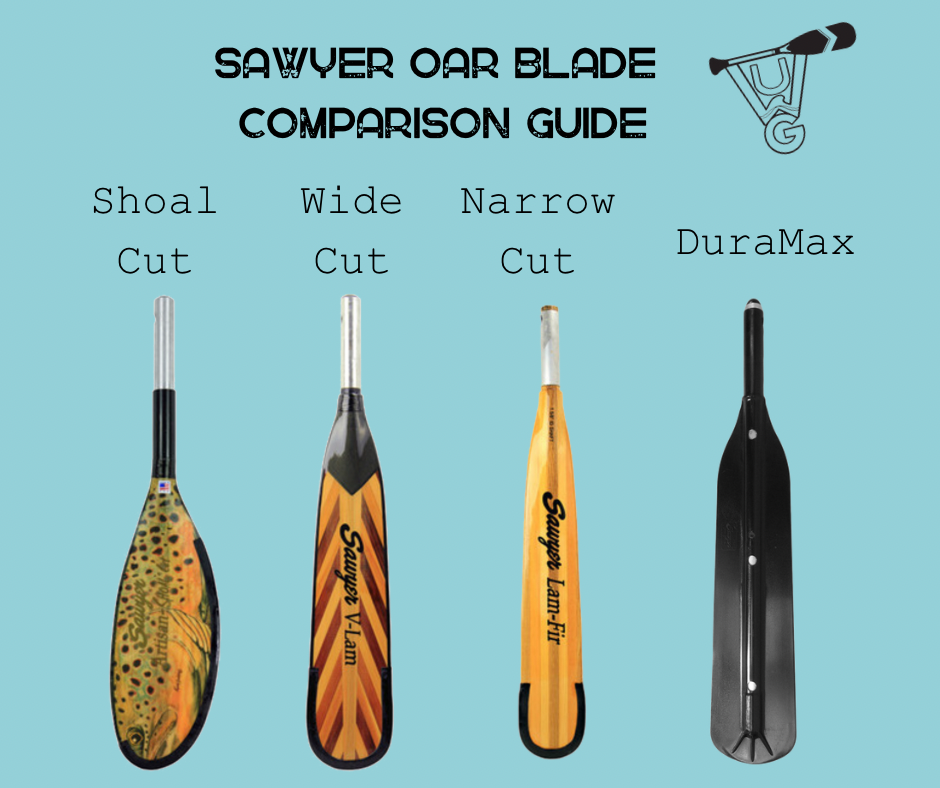Sawyer Oar Blades Complete Comparison Guide
- Posted on
- By Jocelyn Ducourant
- Posted in Gear Guide
- 0

Learn about Sayer Blades and which is right for you!
Materials
Sayer blades are made from a variety of materials. Here’s a breakdown:
1. Dynelite
The most popular material is dynelite, which is a carbon fiber and fiberglass outer with a reinforced ash wood center. As the name suggests, they’re light and handle great in the water. The carbon blades offer less flexibility than their wood counterparts but are very durable.
2. V-lam
The lightest blades in the Sawyer lineup but also the most expensive. One of the benefits of being so light is that it makes it easy to feel changes in the current and quickly correct. They’re beautifully crafted red cedar reinforced with fiberglass to create a rustic look while maintaining the durability Sawyer is known for. Both incredibly light and tough.
3. Lam-Fir
Another great wood option, made from Douglas fir and ash wood. These are a bit thicker than the V-lam blades and the heaviest in the lineup.
4. DuraMax
This material is the cheapest option from Sawyer’s line. It’s made from fiberglass reinforced plastic and is a great option for someone who is starting out or looking for a budget blade.
Shape
Blade shaped can be broken down into 3 categories, each serving a different purpose/preference. Here’s everything you need to know!
1. Shoal Cut
Best for low waters and fishing on wide rivers. The shape is designed to prevent damage through heavy rocks. It isn’t ideal for high flow use. In deeper water, this blade is so large that it’s easy to lose control in a strong current while it does take less strokes to get where you’re going. That being said, there are a few boaters that use them in all situations.
2. Wide Cut
The most popular blade shape! It’s a great medium for most rivers. It can grab enough water to navigate well but not too much that it becomes difficult to oar.
3. Narrow Cut
Ideal for rivers that require high precision and little drag. Narrow cut is less prone to getting caught in a current and kicking back at you. It is also great because it has the least amount of drag meaning that it won’t wear you out as fast which is especially crucial in technical water.


Comments
Be the first to comment...